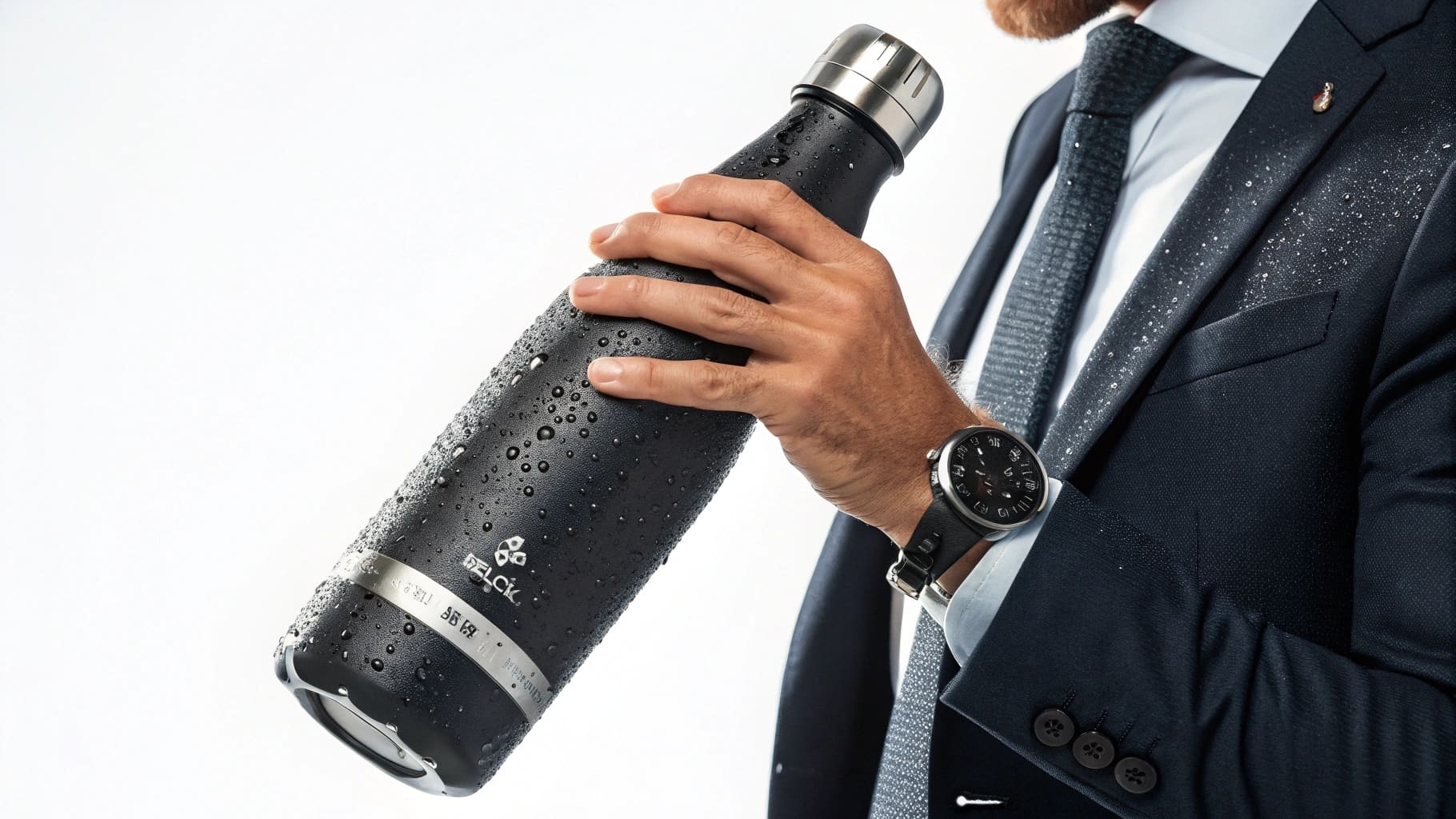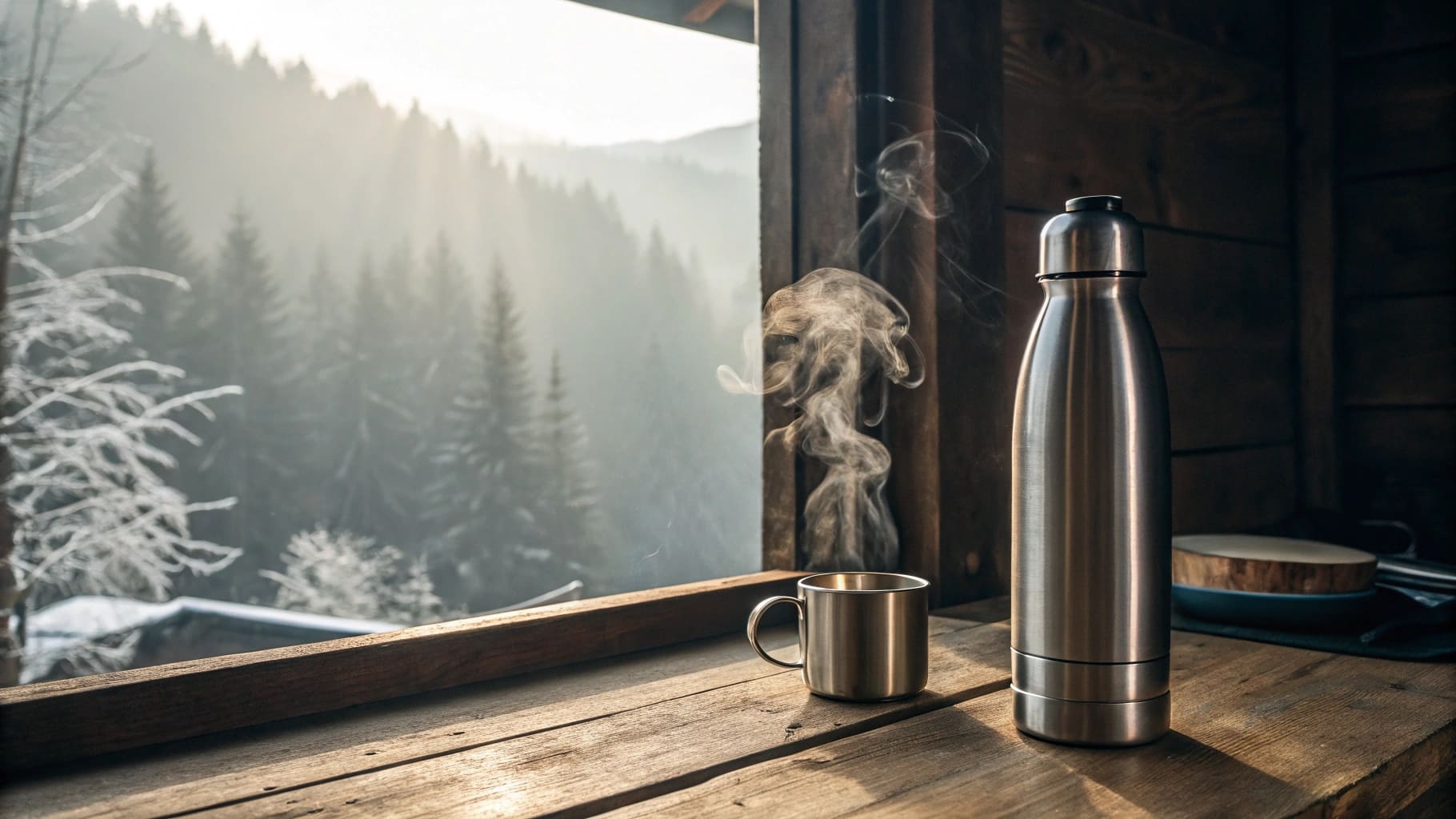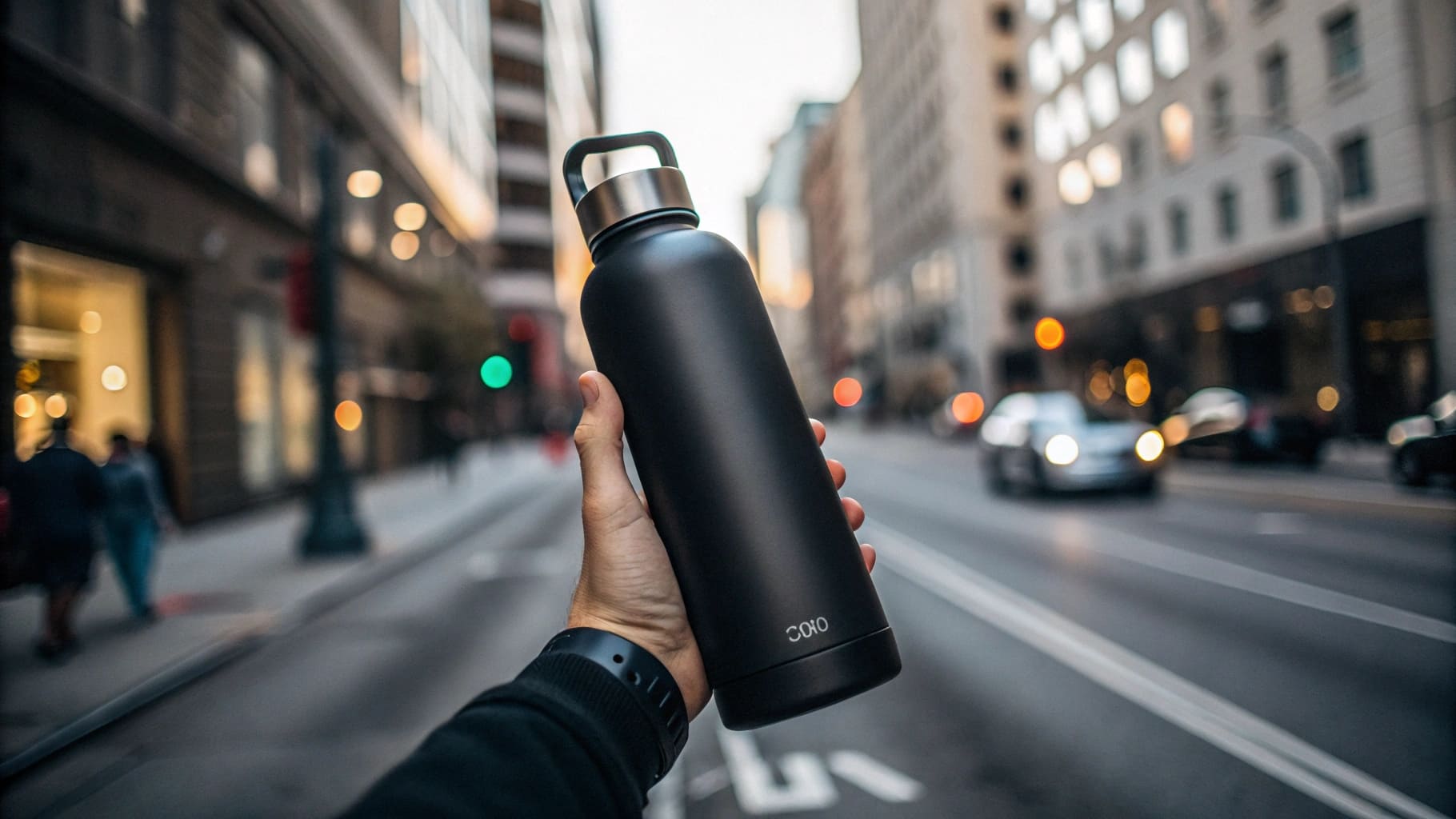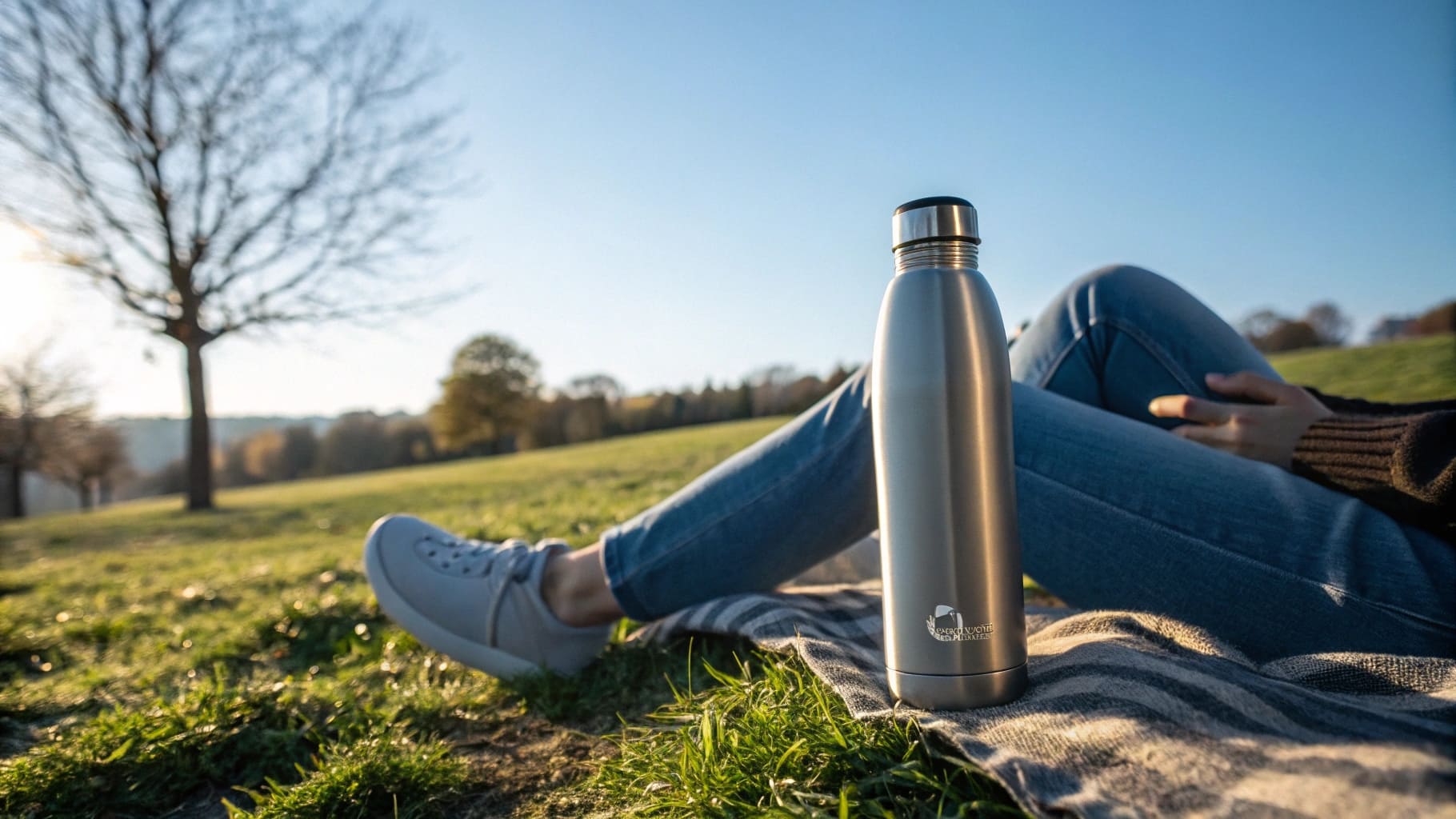Struggling to find the right bottles online? The massive choice can be confusing. I will help you see clearly.
Yes, the online selection is huge. But quality, features, and even safety vary a lot. Knowing what to look for is very important, especially for B2B buyers like you.

The number of online options can feel like a big maze. But do not worry. Let's break down what really matters when you are looking to buy these bottles in bulk for your business. It is more than just finding any bottle. It is about finding the right bottle for your specific needs and customers. We will explore some common questions I get all the time from clients.
What is the healthiest metal for water bottles?
Worried about material safety in water bottles? Some metals might not be good for health. Let's look at the safest choice for your customers.
Food-grade stainless steel is the best choice. Types 304 (often called 18/8) or 316 are very good. They are non-toxic. They do not let chemicals get into the water. This is super important for health and safety.

When we talk about health, we cannot take shortcuts. For water bottles, the material touches what people drink every day. So, it must be safe.
Why Food-Grade Stainless Steel?
Food-grade stainless steel, especially types 304 and 316, is the top pick in our industry. There are good reasons for this. First, these materials are very stable. They do not react with water or other drinks. This means no metallic taste. And more importantly, no harmful substances leaching into the drink. Type 304 is common. It offers great corrosion resistance for most uses. Type 316 stainless steel is even better against rust and corrosion. This makes it good for drinks that might be more acidic or if the bottle is used in salty air environments. Both are easy to clean. They do not hold onto old flavors. I always tell my clients that choosing the right stainless steel is the first step to a quality product.
The Importance for Your Business
For B2B buyers, like procurement officers or startup bosses, telling your customers about this safety is a big plus. Many end-consumers are very health-conscious now. They want to know what their products are made of. This is especially true in markets like America and Europe. These places have strict rules for products that touch food and drink. Using certified food-grade stainless steel helps you meet these rules. It also builds trust with your customers. It shows you care about their health. This can be a strong selling point for your brand. Mark Shenng, a company owner in Canada I work with, always asks for material safety data sheets. He knows his customers in Canada demand safe products.
My Experience with Client Demands
I remember when Mark first started buying from my company, Icobottle. He was very careful about the materials. He told me, "Aries, my customers in Canada are very aware of health issues. I need to be sure the bottles I sell are completely safe." So, we provided him with all the test reports for our 304 stainless steel. He was happy. This focus on quality and safety has helped his business grow. It is a good lesson for anyone selling water bottles. Always focus on the best and safest materials. It protects your customers and your business.
What is the best size water bottle for everyday use?
Not sure which bottle sizes to offer? Choosing the wrong sizes means they might not sell well. I will explain how to pick sizes your customers will want.
The "best" size really depends on the end-user and their daily life. For example, a 17oz (about 500ml) bottle is very popular. It's easy to carry. Larger sizes like 25oz (750ml) or 32oz (1 liter) are for people who drink more.

Choosing the right bottle size is not just about how much water it holds. It is about how well it fits into someone's day. Let's look at this more closely.
Matching Size to Lifestyle
The perfect water bottle size changes from person to person. Think about your target customer. Are they busy commuters who need something light and compact? Or are they athletes who need a lot of water during training? Maybe they are office workers who want a bottle that sits on their desk all day. For instance, a smaller bottle, like a 12oz (350ml) or 17oz (500ml), is great for someone who wants to slip it into a handbag or a car's cup holder. It is also good for kids. A medium size, like 20oz (600ml) to 25oz (750ml), is often a good all-rounder. It offers a good amount of water without being too bulky. Larger bottles, 32oz (1 liter) or even 40oz (1.2 liters), are best for people who are very active, or who do not have easy access to refills during their day. I always advise my clients to think carefully about who will be using the bottles.
Popular Sizes and Their Uses
Let me give you some common examples I see at Icobottle.
- 17oz (500ml): This is a very popular, versatile size. It's like a standard disposable plastic bottle size, so people are used to it. It fits well in most bag side pockets and cup holders. Good for daily errands, office use, or light exercise.
- 25oz (750ml): This size is a step up. It is good for people who want to make sure they drink enough water without refilling too often. It is popular for longer workouts or a full day out.
- 32oz (1 liter): This is for serious hydration. Athletes, hikers, or people working in hot conditions often choose this size. It means fewer refills and ensures they have enough water.
Understanding these common uses can help you decide what to stock.
A Smart B2B Sizing Strategy
As a B2B buyer, you have a few choices. You could offer a range of sizes. This way, you meet the needs of more customers. Or, you could focus on one or two sizes that are most popular for your specific target market. Mark from Canada, for example, started by ordering mostly 17oz bottles. After talking about his customers, who include outdoor enthusiasts, he added 32oz bottles to his range. He found this helped him reach more people. He told me, "Aries, offering two main sizes instead of just one really made a difference. People like having a choice that fits their activity level." So, do some research on your market. See what sizes are selling well. Or, ask your potential customers what they prefer. This will help you make a smart choice.
Are all stainless steel water bottles really the same?
Do you think all stainless steel bottles are basically equal? This common mistake can cost your business money and reputation. I will show you the important differences.
No, they are definitely not all the same. Big differences exist in steel grade, how they are built, the types of lids, and the overall manufacturing quality. These things greatly affect how well the bottle works, how much it costs, and its perceived value.

It is easy to look at two shiny stainless steel bottles and think they are identical. But, as a B2B buyer, you need to know that what is under the surface can vary a lot. These differences are critical for your business.
Beyond the Surface: Key Variations
Many people think "stainless steel is stainless steel." But that is a big oversimplification. For B2B clients, understanding these differences helps you choose products that fit your brand's quality and your customers' expectations. Here are the main things to look at:
- Steel Grade: Most good bottles use 304 (18/8) stainless steel. It is food-grade and resists rust well. Some premium bottles might use 316 stainless steel. This type has even better corrosion resistance. It can be good if the bottle will hold liquids other than water, like acidic fruit juices, or if it's used near the ocean.
- Construction (Insulation): This is a major one. Single-wall bottles are lighter and cheaper. But they do not keep drinks hot or cold. Double-wall vacuum-insulated bottles are the most popular now. They have two layers of steel with a vacuum in between. This stops heat transfer. So, drinks stay cold for up to 24 hours or hot for up to 12 hours. This feature often means a higher price, but customers usually want it.
- Lid Types and Features: The lid is a big part of how good the bottle is to use. There are simple screw-on lids. There are also flip-top lids, straw lids, spout lids, and lids with carry handles. A good lid must be leak-proof. It should also be easy to clean. Some lids are designed for specific activities, like sports.
- Manufacturing Quality and Finish: This includes how well the bottle is made. Are the welds (where metal parts are joined) smooth? Is the inside of the bottle smooth and easy to clean? How durable is the outside coating or paint? A high-quality finish looks better. It also lasts longer. This all affects how people see the value of the bottle.
What These Differences Mean for Buyers
Knowing about these variations is very important. It helps you make smart buying decisions. For example, if your brand is all about high performance and quality, you will want to choose double-wall vacuum-insulated bottles made from 304 or even 316 steel, with well-designed, leak-proof lids. If you are targeting a very budget-conscious market, maybe single-wall bottles are okay. But always be clear about what you are offering. My client, Mark Shenng, learned this the hard way with a previous supplier. He once received a batch of bottles that he thought were 304 stainless steel. But they started showing tiny rust spots for some customers. It turned out to be a lower quality steel. Now, he always checks the material certifications very carefully. He says, "Aries, I learned that not all steel is created equal. Now I ask for proof. It saves a lot of trouble later."
Table: Comparing Stainless Steel Bottle Features
To make it clearer, here is a simple table:
| Feature | Standard Option (Often Cheaper) | Premium Option (Often Better Quality/Performance) | Impact for B2B Buyers |
|---|---|---|---|
| Steel Grade | Lower grade or unspecified | Food-Grade 304 (18/8) or 316 | Safety, taste, rust resistance, longevity. Important for customer trust. |
| Construction | Single-wall | Double-wall vacuum insulated | Temperature retention (hot/cold), prevents condensation, higher perceived value. |
| Lid Design | Basic screw-on, potential leaks | Leak-proof, various types (spout, straw, handle) | User convenience, functionality for different activities, customer satisfaction. |
| Manufacturing Quality | Rougher finish, thinner steel | Smooth welds, durable coating, polished interior | Durability, aesthetic appeal, brand reputation. |
| Customization | Limited or basic printing | High-quality logo printing, various colors, engraving | Brand promotion, perceived value, ability to match brand identity. |
When you are sourcing stainless steel water bottles, ask your supplier about these details. At Icobottle, we are always transparent about the materials and construction of our products. This helps our clients, like you, choose the best options for their business.
Conclusion
Choosing stainless steel bottles online needs care. Understand material, size, and quality differences. This knowledge helps you make smart B2B purchasing decisions for your brand.

